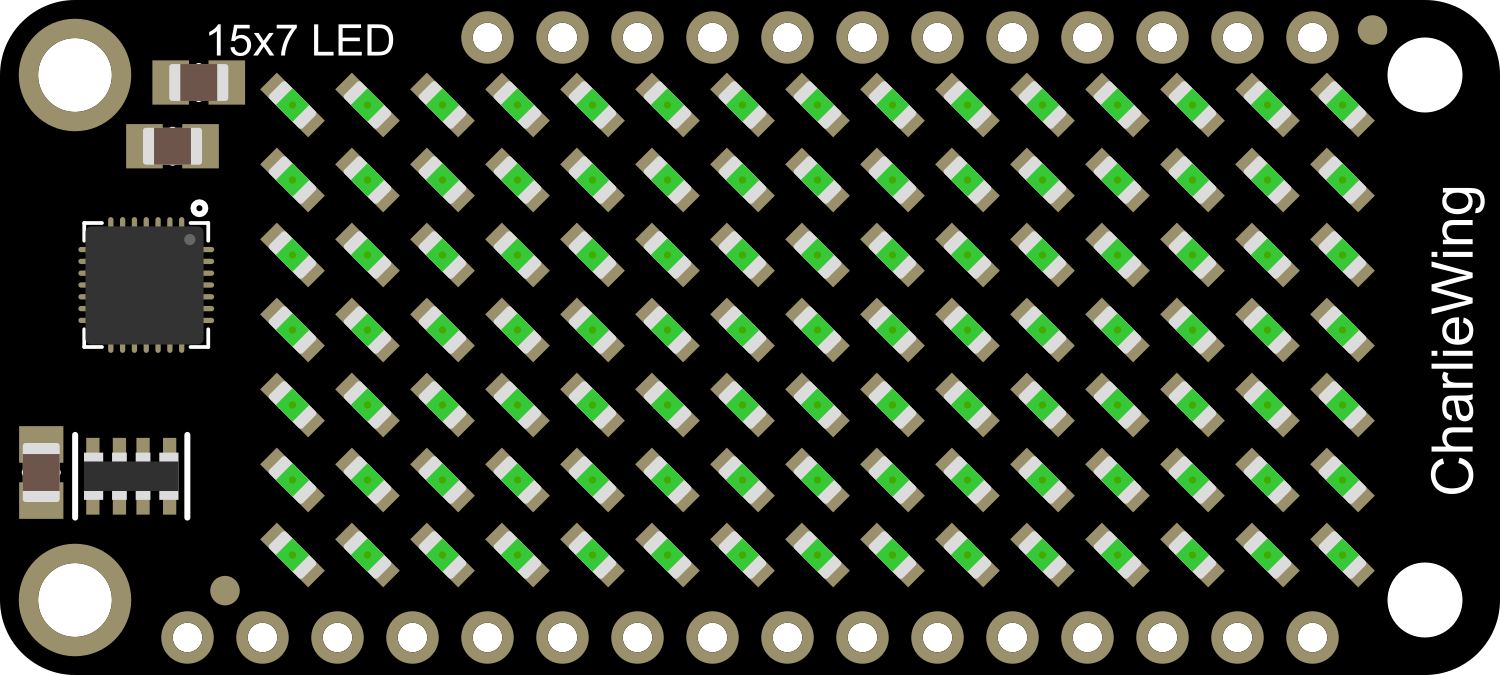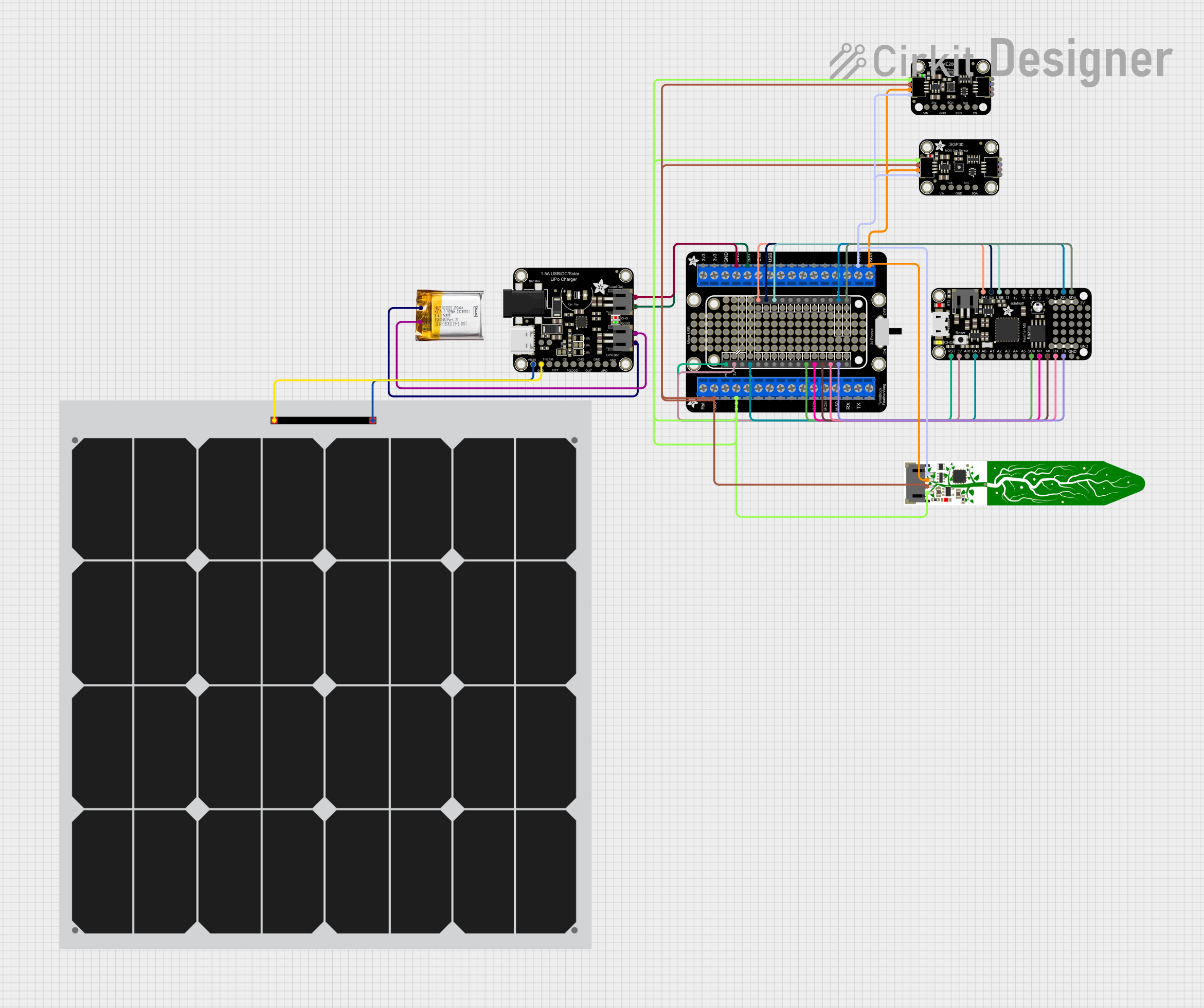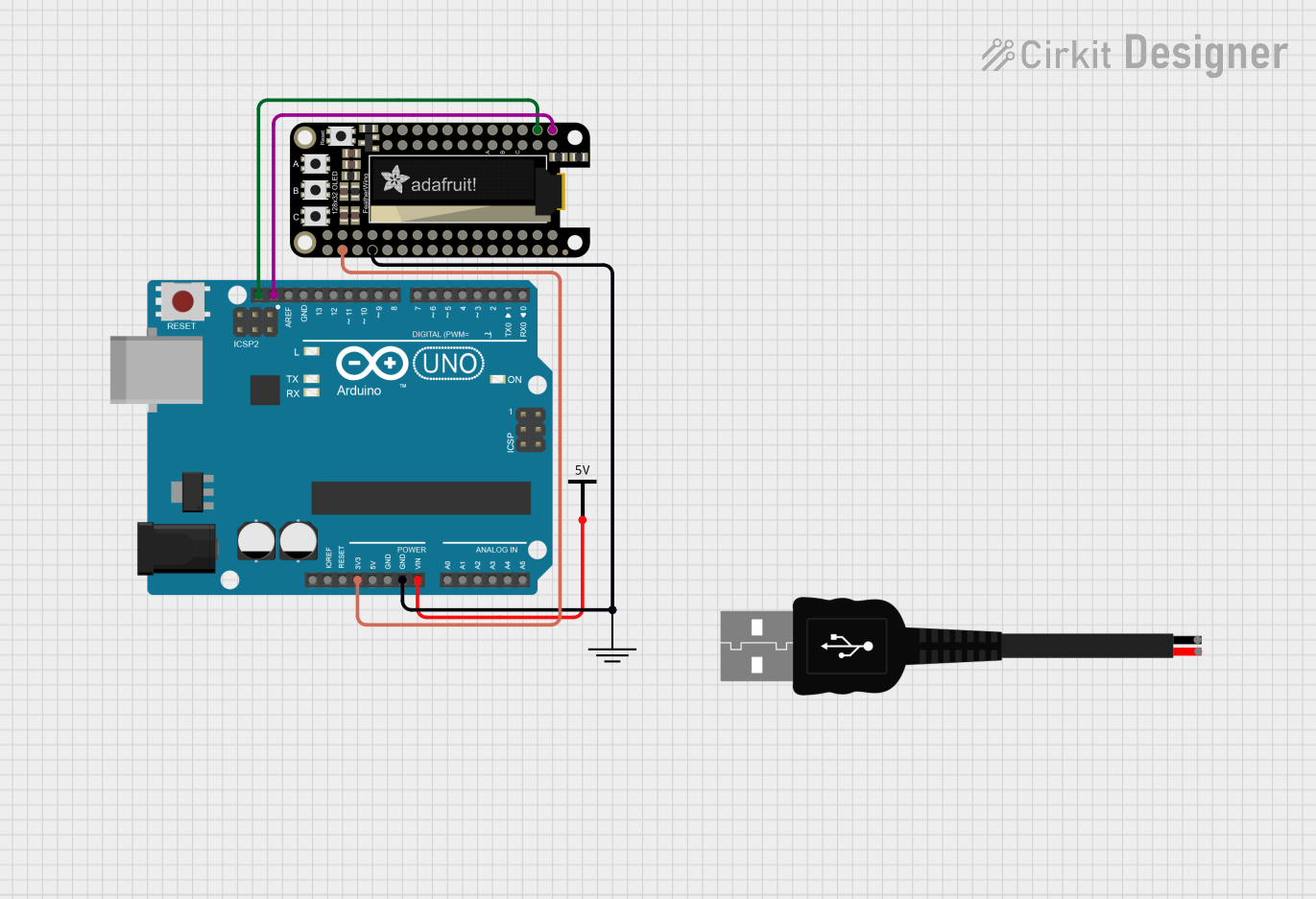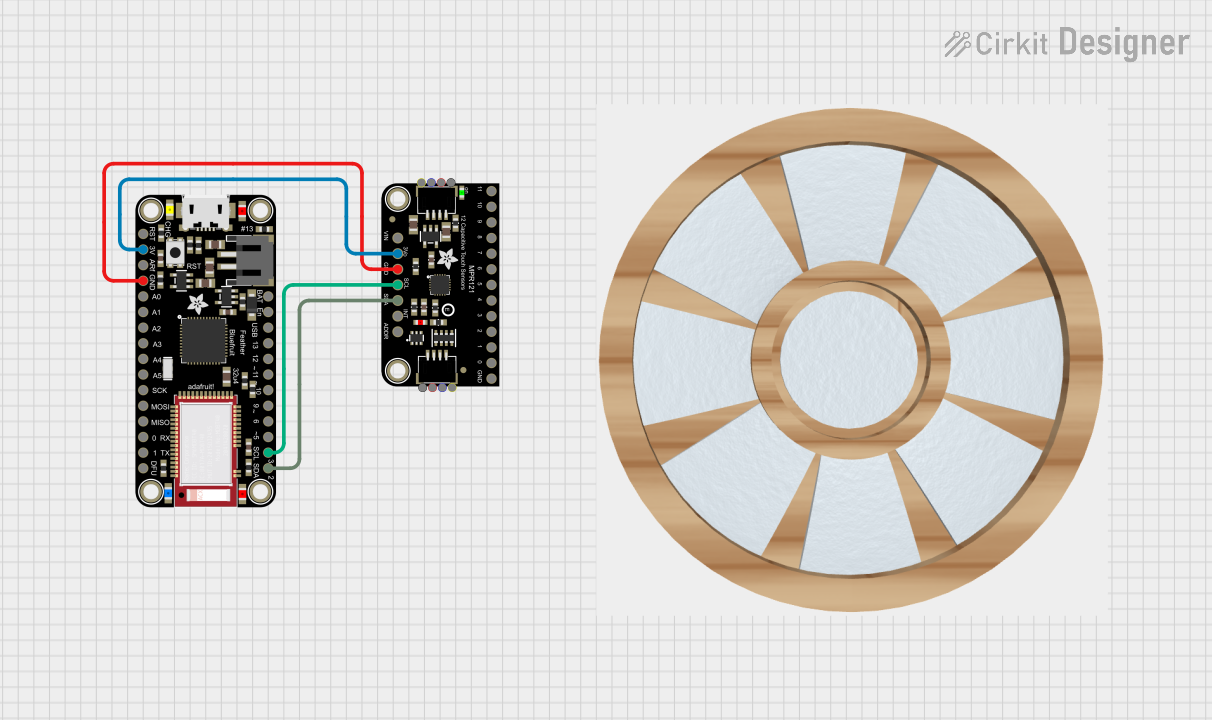
How to Use Adafruit Green 15x7 CharliePlex FeatherWing: Examples, Pinouts, and Specs

 Design with Adafruit Green 15x7 CharliePlex FeatherWing in Cirkit Designer
Design with Adafruit Green 15x7 CharliePlex FeatherWing in Cirkit DesignerIntroduction
The Adafruit Green 15x7 CharliePlex FeatherWing is an innovative LED matrix display designed for use with the Feather series of microcontrollers from Adafruit. This module features a unique 15x7 grid of green LEDs that can be individually addressed using the Charlieplexing technique, which allows for control of multiple LEDs with fewer I/O pins. The FeatherWing form factor makes it easy to stack on top of or alongside a Feather board for compact and versatile projects.
Common applications for the CharliePlex FeatherWing include:
- Creating scrolling text displays
- Building custom light animations
- Designing wearable electronic badges
- Adding visual output to sensors and interactive projects
Explore Projects Built with Adafruit Green 15x7 CharliePlex FeatherWing

 Open Project in Cirkit Designer
Open Project in Cirkit Designer
 Open Project in Cirkit Designer
Open Project in Cirkit Designer
 Open Project in Cirkit Designer
Open Project in Cirkit Designer
 Open Project in Cirkit Designer
Open Project in Cirkit DesignerExplore Projects Built with Adafruit Green 15x7 CharliePlex FeatherWing

 Open Project in Cirkit Designer
Open Project in Cirkit Designer
 Open Project in Cirkit Designer
Open Project in Cirkit Designer
 Open Project in Cirkit Designer
Open Project in Cirkit Designer
 Open Project in Cirkit Designer
Open Project in Cirkit DesignerTechnical Specifications
Key Technical Details
- LED Color: Green
- Matrix Size: 15x7 LEDs
- Operating Voltage: 3.3V to 5V
- Communication Interface: I2C
- I2C Addresses: 0x70 (default), selectable with solder jumpers
- Dimensions: 50mm x 23mm x 4mm
Pin Configuration and Descriptions
| Pin | Description |
|---|---|
| GND | Ground connection |
| 3V | 3.3V power supply |
| SDA | I2C Data |
| SCL | I2C Clock |
| RST | Reset pin (optional use) |
| A0-A4 | Address selection pins for I2C |
Usage Instructions
Integration with a Circuit
To use the Adafruit Green 15x7 CharliePlex FeatherWing with a Feather microcontroller:
- Align the headers of the FeatherWing with the corresponding pins on the Feather board.
- Solder the headers to establish a secure connection.
- Connect the Feather board to your computer via USB.
- Ensure that the Feather board is powered, either through USB or an external power supply.
Best Practices
- Use the provided Arduino library for the CharliePlex FeatherWing to simplify programming.
- Avoid exposing the module to moisture or extreme temperatures.
- When handling the board, be cautious of electrostatic discharge by grounding yourself.
Example Code for Arduino UNO
#include <Wire.h>
#include <Adafruit_IS31FL3731.h>
// Create the LED driver object
Adafruit_IS31FL3731 ledmatrix = Adafruit_IS31FL3731();
void setup() {
Wire.begin(); // Initialize I2C
if (!ledmatrix.begin()) {
Serial.println("IS31FL3731 not found");
while (1);
}
Serial.println("IS31FL3731 found!");
}
void loop() {
ledmatrix.clear(); // Clear the buffer
// Draw a simple pattern
for (int i = 0; i < 15; i++) {
ledmatrix.drawPixel(i, i % 7, 30); // Draw diagonal line
}
ledmatrix.display(); // Display the buffer
delay(100);
}
Ensure that you have installed the Adafruit_IS31FL3731 library through the Arduino Library Manager before uploading this code to your Arduino UNO.
Troubleshooting and FAQs
Common Issues
- LEDs Not Lighting Up: Ensure that the FeatherWing is properly seated on the Feather board and that all solder joints are solid.
- Dim or Flickering LEDs: Check that the power supply is adequate and stable. The FeatherWing requires a steady voltage between 3.3V and 5V.
- I2C Communication Errors: Confirm that the I2C address is correctly set and that there are no conflicts with other devices on the I2C bus.
Solutions and Tips
- If you encounter soldering issues, reheat the joints and apply a small amount of additional solder if necessary.
- For I2C communication issues, use a logic analyzer or oscilloscope to verify that the SDA and SCL lines are functioning correctly.
- If multiple CharliePlex FeatherWings are used, ensure that each has a unique I2C address by adjusting the A0-A4 solder jumpers.
FAQs
Q: Can I use the CharliePlex FeatherWing with other microcontrollers?
A: Yes, the CharliePlex FeatherWing can be used with any microcontroller that supports I2C communication, provided you have the appropriate library or write your own code to interface with the IS31FL3731 driver chip.
Q: How do I change the I2C address?
A: The I2C address can be changed by soldering the A0-A4 address jumpers on the back of the board to connect them to either GND or 3V.
Q: Can I power the FeatherWing with a battery?
A: Yes, as long as the battery provides a voltage within the operating range of 3.3V to 5V.
For further assistance, consult the Adafruit support forums or the detailed datasheet for the IS31FL3731 LED driver chip.